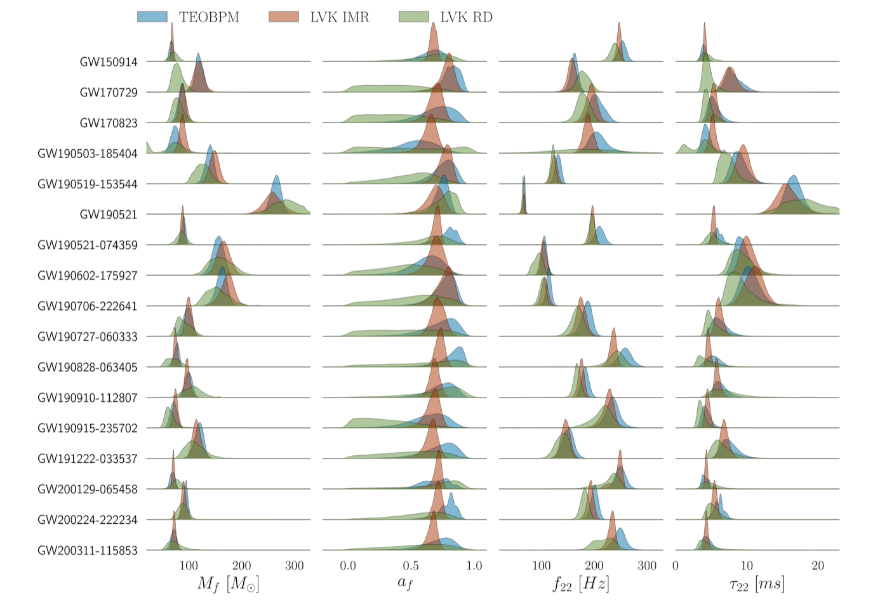Searching for ringdown higher modes

Do black holes behave as we expect? Is General Relativity the correct theory of gravity in the dynamical high-curvature regime? Spacetime vibrations, generated when the remnant black hole briefly shakes for a few thousandths of a second, are a powerful tool to address these questions. The higher the measured number of these vibrational modes, the larger is the insight gained into this dynamical process. Yet, these oscillations are extremely short and difficult to characterise, bringing a unique set of modelling and data analysis challenges into play.
In a recent article, Strong members Vasco Gennari (now PhD at Laboratoire des 2 Infinis in Toulouse) and Gregorio Carullo, together with Prof. Walter Del Pozzo, from the University of Pisa, have analysed the last cycles of gravitational wave signals from compact binary coalescences with unprecedented detail, precisely to hunt for such multiple oscillation frequencies.
They performed an accurate "targeted" search based on the most advanced model available in General Relativity for such a dynamical process, exploiting its sensitivity to catch faint departures from expected black hole vibrations. After taming subtle systematic uncertainty entering the measurement, for the first time they found hints of multiple vibrations in four events that had not been picked up by previous analyses, showing the consistency of such physical process with its general relativistic description, and providing crucial observational evidence for how gravity behaves in extreme regimes.
Most importantly, starting to detect such oscillations at current sensitivities has remarkably encouraging consequences on the future of the field, for which the paper offers robust detectability predictions. Given current low sensitivities, many unexpected surprises will be hiding in new upcoming data now being collected by the international network of LIGO-Virgo interferometers. Will we soon be able to shed light on these dark objects?
The research was partly developed during the GravNet-funded NBI visit of Vasco, and results are publicly available at the link: https://link.springer.com/article/10.1140/epjc/s10052-024-12550-x
